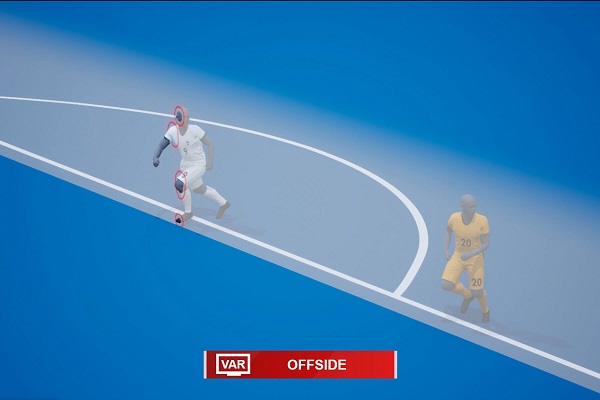The Premier League will use semi-automated offside technology (SAOT) before the end of the year.
Clubs unanimously agreed to introduce the technology next season at a meeting of top-flight teams on Thursday, and its implementation is expected to cut the average length of a VAR check for offside by 30 seconds.
The Premier League, which has not disclosed the technology partner it will work with, with no contracts understood to have been signed yet, said the intention was to introduce the technology after one of the autumn international breaks - as early as September or as late as November.
"The technology will provide quicker and consistent placement of the virtual offside line, based on optical player tracking, and will produce high-quality broadcast graphics to ensure an enhanced in-stadium and broadcast experience for supporters," a league statement said.
Semi-automated offside is already used in the Champions League and Serie A, while not exactly the same system, it was also used at the World Cup in Qatar in 2022, with a chip embedded inside the matchday ball.
It was also used in the most recent Women's World Cup and at December's Club World Cup in Saudi Arabia, which was won by Manchester City. It will also feature at next summer's European Championship in Germany.
The Premier League currently has VAR officials check offsides using Hawk-Eye but the system has faced heavy criticism for perceived errors and the time taken to come to a decision, while also leaving fans in the stadium in the dark with no replays.
The most high-profile error came when Luis Diaz was wrongly denied a goal for Liverpool at Tottenham.
Diaz was flagged offside after scoring but replays showed he was actually onside. However, VAR Darren England mistakenly believed the on-field decision had been to award the goal, leading him to tell referee Simon Hooper that the check was complete.





